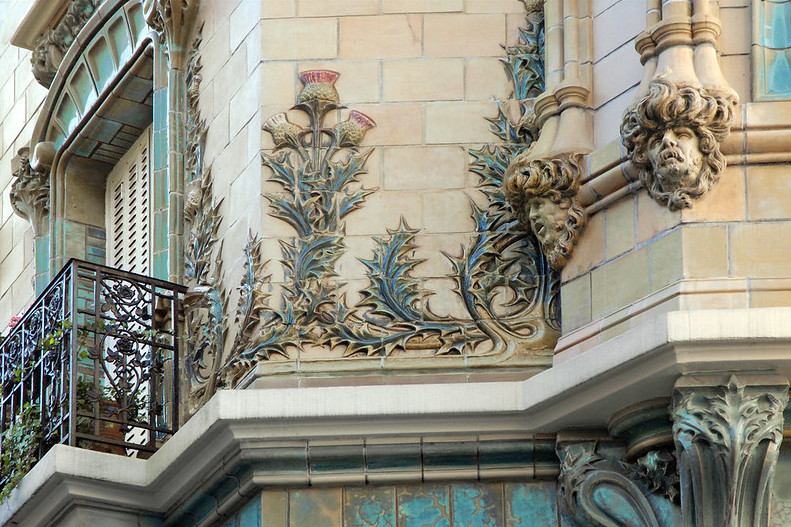Paris’ architectural gems never cease to amaze. From the iconic Eiffel Tower to the cobbled streets of Montmartre, there are world-renowned landmarks around every corner.
But beyond these famous attractions, lie a wealth of lesser-known treasures.
In this new blog post, the first of a two-part series for 56Paris readers, we’re taking you on a journey through some unique architectural finds in our city, counting down from the 17th to the 9th arrondissements (districts).
Beyond the tourist guidebooks
For travelers who love art, architecture and culture, Paris is one of the most popular cities in the world.
But beyond the well-trodden tourist path, you’ll find many ‘hidden’ buildings, all waiting for you to explore. You simply have to know where to look!
These Paris architectural gems tell the story of our city’s rich history, like a living museum of styles over many hundreds of years.
Whether you’re a seasoned Francophile or a first-time visitor, there’s always something exciting to discover in the famed City of Light.
The 17th – grand hotels and museums
Our architectural tour of hidden Paris begins on the right bank, in the 17th district. This north-west corner of the city is where you’ll find the Arc de Triomphe at the very bottom.
But beyond that, the 17th has so much more to find. The Parc Monceau, with its walking paths, pond and beautiful homes surrounding it, is one such area.
Here you will find the Hôtel Menier. Designed for an industrial chocolatier, Émile-Justin Menier, this large mansion is now a luxurious hotel. The building is a beautiful example of Beaux-Arts architecture, well worth taking a look. You’ll find it on avenue Van Dyck.
Designed by Jules Sauvage in 1893, the facade has red-brick detailing and wrought-iron balconies, while the interior features grand staircases, stained-glass windows and a stunning interior courtyard.
There’s more to discover nearby, including two fascinating museums housed in architecturally significant buildings.
The Pagode is an octagonal folly, built in the 18th century, inspired by Chinese pagodas. You can’t miss it – it’s the red building on rue de Courcelles. Fittingly, it’s now home to a museum of Asian art. There’s also the Pharmacie on Avenue Ruysdaël, a large mansion that’s now a museum of medicine.
A dream apartment in the 17th
Looking to live here? We currently have this exceptional top-floor apartment for sale in the neighborhood.
Set in a grand Hausmannian building, this property is spacious, boasts soaring 10-foot ceilings, and exudes timeless elegance throughout.
It’s ideal for a prestigious primary residence, rental investment, or a stylish pied-à-terre.
The 16th – home to Art Nouveau
The 16th is well known for its chic neighborhoods, luxurious shops, and its grand Haussmannian architecture.
But it’s also a haven for Art Nouveau architecture. Popular from the 1890s to the 1910s, this style uses organic forms, stone and wrought iron, with an emphasis on beauty.
For an amazing example of this style, head to Les Chardons by Charles Klein on rue Claude Chahu.
This extraordinary apartment building on rue Claude Monet is a true masterpiece of Art Nouveau. It was beautifully designed by Hector Guimard, the architect behind the Paris Metro entrances all around our city – another fine example of Art Nouveau.
Les Chardons is a riot of color and creativity, with its wrought-iron balconies, and a façade of aquamarine and orange. It’s decorated all over with a thistle design – which not surprisingly – is the word ‘chardon’ in French.
Castel Béranger in the 16th
Another architectural gem from the Art Nouveau period is Castel Béranger, located in the heart of the 16th arrondissement on rue de la Fontaine.
This whimsical building, designed by Jules Lavirotte, offered affordable housing for Parisian workers.
A brilliant Art Nouveau time capsule from 125 years ago, it features a facade adorned with ceramic tiles, wrought-iron balconies and fanciful sculptures. It’s certainly another one for your camera!
The 9th – a blend of styles
The 9th arrondissement is a vibrant district of Paris, known for its grand boulevards, bustling department stores and a wealth of trendy restaurants.
But there's more to the 9th than meets the eye.
Tucked away behind the main streets, you’ll find hidden courtyards and plenty of unexpected architectural gems… such as Le Temps.
Located on boulevard des Italiens, it’s a striking building. The first thing you’ll notice is the gilded clock on the outside, surely one of the most beautiful clocks in all of Paris.
Today it retains a beautiful facade with geometric patterns, stained glass windows and bas-relief sculptures.
Our final gem in the 9th is just a stone’s throw away from here – Cité Malesherbes.
This private passageway, built in the 18th century, is a hidden oasis in the heart of the city, overlooking the 20 rue des Martyrs. Lined with charming townhouses, all built in a neo-classical style, Cité Malesherbes offers a glimpse into a bygone era.
For an ideally located pied-à-terre in the 9th, look no further than this Grands Boulevards two-bed apartment. With a blend of historical charm and modern convenience, it offers multiple possibilities.
Unique Paris Architectural Gems Part Two, coming soon…
This is just a taste of the many unique Paris architectural gems dotted around the capital. In part two, we’ll explore the hidden treasures of other arrondissements. Watch this space!
Looking to buy your own apartment in Paris?
We hope you’re inspired by the hidden architecture of our city.
If you’re considering buying a pied-à-terre in Paris, these neighborhoods offer a chance to live surrounded by history and beauty.
Why not get in touch with our team of English-speaking real estate experts?
Or for more Paris news and updates, you can follow our social media channels in just a few clicks by visiting Facebook, X, Instagram, and Pinterest.
Photo: Jean-Pierre Dalbéra, GFreihalter, MOSSOT, Francisco Anzola, RemiHoms
